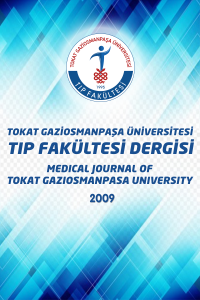Perikardiyal Efüzyon
Perikardiyal efüzyon, semptom, tanı
Pericardial Effusion
Pericardial effusion symptom, diagnosis, treatment,
___
- 1. Sharma NK, Waymack JR. Acute Cardiac Tamponade. StatPearls [Internet]. StatPear ls Publishing; Treasure Island (FL): Dec 17, 2019.
- 2. Troughton RW, Craig RA, Allan RK: Pericarditis. Lancet. 2004;363:717-27.
- 3. Karam N, Patel P, De Filippi C: Diagnosis and management of chronic pericardial effusions. Am J Med Sci. 2001;322:79-87.
- 4. Imazio M, Adler Y. Management of pericardial effusion.Eur Heart J. 2013;34:1186-97.
- 5. Imazio M, Brucato A, Mayosi BM, et al. Medical therapy of pericardial diseases: part II: Noninfectious pericarditis, pericardial effusion and constrictive pericarditis.J Cardiovasc Med (Hagerstown). 2010;11:785-94.
- 6. Galve E, Garcia-Del-Castillo H, Evangelista A, Batlle J, Permanyer-Miralda G, Soler-Soler J. Pericardial effusion in the course of myocardial infarction: incidence, natural history, and clinical relevance. Circulation. 1986;73:294-9.
- 7. Figueras J, Juncal A, Carballo J, Cortadellas J, Soler JS. Nature and progression of pericardial effusion in patients with a first myocardial infarction: relationship to age and free wall rupture. Am Heart J. 2002;144:251-8.
- 8. Posner MR, Cohen GI, Skarin AT. Pericardial disease in patients with cancer. The differentiation of malignant from idiopathic and radiation-induced pericarditis. Am J Med. 1981;71:407-13.
- 9. Sagrista-Sauleda J. Merce 1, Permanyer-Miralda G, Soler-Soler J. Clinical clues to the causes of large pericardial effusion. Am J Med. 2000; 105:95-01.
- 10. Porte HL, Janecki-Delebecq TJ, Finzi L, Métois DG, Millaire A, Wurtz AJ. Pericardoscopy for primary management of pericardial effusion in cancer patients. Eur J Cardiothorac Surg.Eur J Cardiothorac Surg. 1999;16:287-91
- 11. Alerhand S, Carter JM. What echocardiographic findings suggest a pericardial effusion is causing tamponade? Am J Emerg Med. 2019;37:321-326.
- 12. Shabetai R. Pericardial effusion: haemodynamic spectrum. Heart. 2004;90:255-6.
- 13. Buhumaid RE, St-Cyr Bourque J, Shokoohi H, Ma IWY, Longacre M, Liteplo AS. Integrating point-of-care ultrasound in the ED evaluation of patients presenting with chest pain and shortness of breath. Am J Emerg Med. 2019;37:298-303
- 14. Ristić AD, Imazio M, Adler Y, et alTriage strategy for urgent management of cardiac tamponade: a position statement of the European Society of Cardiology Working Group on Myocardial and Pericardial Diseases. Eur Heart J. 2014;35:2279-84.
- 15. Gueberman B, Fowler N, Engel P, Gueron M, Allen JM.Cardiac tamponade in medical patients. Circulation. 1987;64:633-40.
- 16. Hovgaard HL, Nielsen RR, Laursen CB, Frederiksen CA, Juhl-Olsen P. When appearances deceive: Echocardiographic changes due to common chest pathology. Echocardiography. 2018;3:1847-59.
- 17. Imazio M, Mayosi BM, Brucato A, et al. Triage and management of pericardial effusion.J Cardiovasc Med (Hagerstown). 2010;11:928-35.
- 18. Sagrista-Sauleda J, Angel J, Permanyer-Miralda G, Soler-Soler J. Long-term follow-up of idiopathic chronic pericardial effusion. N Eng J Med. 1999;34 :2054-9
- 19. Soler-Soler J, Sagristà-Sauleda J, Permanyer-Miralda G. Relapsing pericarditis. Heart. 2004;90:1364-8.
- 20. Imazio M, Bobbio M, Cecchi E,et al. Colchicine in addition to conventional therapy for acute pericarditis: results of the colchicine for acute PEricarditis (COPE) trial. Circulation. 2005;112:2012-6.
- 21. Maisch B, Seferović PM, Ristić AD, et al. Guidelines on the diagnosis and management of pericardial diseases executive summary; The Task force on the diagnosis and management of pericardial diseases of the European society of cardiology. Eur Heart J. 2004;25:587–610.
- 22. Imazio M, Demichelis B, Parrini I, et al. Day-hospital treatment of acute pericarditis: a management program for outpatient therapy. J Am Coll Cardiol. 2004;43:1042-6.
- 23. Tsang TS, Seward JB, Barnes ME, et al. Outcomes of primary and sccondary treatment of pericardial effusion in patients with malignancy. Mayo Clin Proc 2000:75:248-53.
- 24. Maisch B. [Management of pericarditis and pericardial effusion, constrictive and effusive-constrictive pericarditis]. Herz. 2018;43:663-78.
- 25. Vaitkus PT, Herrmann HC, Le Winter MM. Treatment of malignant pericardial effusion. JAMA. 1994;272:59-64.
- 26. Palacios IF, Tuzcu EM, Ziskind AA, Younger J, Block PC. Percutaneous balloon pericardial window for patients with malignant pericardial effusion and tamponade. Cathet Cardiovasc Diagn. 1991;22:244-9.
- 27. Swanson N, Mirza I, Wijesinghe N, Devlin G. Primary percutaneous balloon peri cardiotomy for malignant pericardial effusion. Catheter Cardiovasc Interv. 2008;71:504-7.
- 28. Wang HJ, Hsu KL, Chiang FT, Tseng CD, Tseng YZ, Liau CS. Technical and prognostic outcomes of double-balloon pericardiotomy for large malignancy-related pericardial effusions. Chest. 2002;122:893-9.
- 29. Lashevsky I, Ben Yosef R, Rinkevich D, Reisner S, Markiewicz W.lntrapericardial minoksiklin sclerosis for malignant pericardial effusion. Chest 1996;109:1452-4
- 30. Piehler JM, Pluth JR, Schaff HV, Danielson GK, Orszulak TA, Puga FJ. Surgical management of effusive pericardial disease. Influence of extent of pericardial resection on clinical course. J Thorac Cardiovasc Surg. 1985;90:506-16.
- 31. Mitiku TY, Heidenreich PA. A small pericardial effusion is a marker of increased mortality.Am Heart J. 2011;161:152-7.
- ISSN: 1309-3320
- Başlangıç: 2009
- Yayıncı: Tokat Gaziosmanpaşa Üniversitesi
Örümcek Isırıkları: İki Olgu Sunumu
Vildan KÖLÜKÇÜ, Mürsel KAHVECİ
Akıllı Telefon Kullanan Tıp Fakültesi Öğrencilerinde İnternet Bağımlılığı Ve Baş Ağrısı İlişkisi
Elif ERDOĞDU CEYLAN, Ramazan TETİKÇOK, Nagihan YILDIZ ÇELTEK
